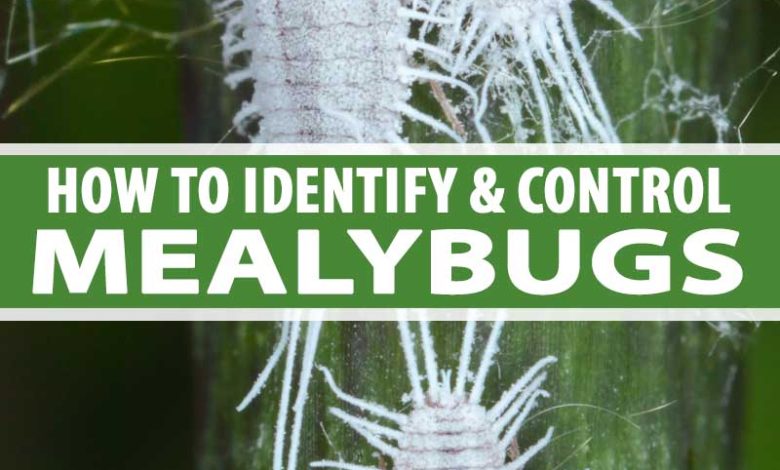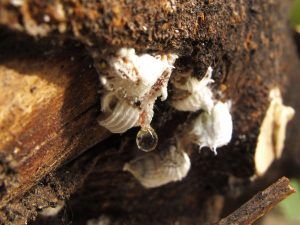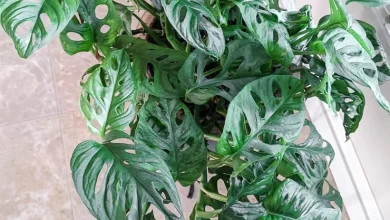Ribbed Mealybug: [How to Identify It and How to Treat It]

 The ribbed mealybug (Icerya purchasi) is a common pest of many types of crops as it feeds on plant sap.
The ribbed mealybug (Icerya purchasi) is a common pest of many types of crops as it feeds on plant sap.
Its preferences include citrus, but it is likely to stick to other crops when attacking an orchard or plantation.
There are both natural and chemical remedies to deal with it, so it should not become a very advanced problem if it is treated in time.
Do not allow your crops to be affected by the ribbed cochineal and write down the information that we bring you to avoid it or be able to combat it.
Ahead!
What is ribbed mealybug?
The ribbed cochineal is an insect that is classified within the Homoptera family and that in the scientific world is called Icerya Purchasi.
Among its main characteristics we find:
- The structure of the body is oval in shape and is covered by a hard white layer that gives the image of being soft, like cotton. Due to the contrasting color with the green of the plants, it is easier to recognize them.
- The mouth is formed by a suction device that it uses to pierce the structure of the plants and thus extract the sap that runs through them.
- The attack preference is towards the citrus family and towards those plants that have stems with a woody texture.
- It does not attack alone but forms large colonies that, as time goes by, can become very numerous if corrective treatment is not applied.
- The female usually lays the eggs progressively throughout her cycle. Therefore, the eggs hatch at different times, keeping the population constant or increasing it. They do not need males to carry out this reproductive process, so it is very common that most of the members of the colony are represented by females.
Consume throughout its life cycle
One of the most important considerations about the ribbed mealybug is that it consumes the structure of the plant in all its phases.
That is, since they are nymphs and take advantage of the tender shoots, until they reach maturity and move on to the hardest areas.
Finally, it is worth saying that it is an insect that operates when ambient temperatures are warm.
For this reason, care must be taken in summer, without neglecting spring and the beginning of autumn.
Ribbed Mealybug Life Cycle
 The ribbed mealybug infests twigs and branches.
The ribbed mealybug infests twigs and branches.
It is hermaphrodite and oval in shape, reddish brown with black hairs, 5 mm long.
When mature, the insect remains immobile, adheres to the plant by means of waxy secretions, and produces a white egg sac in grooves, by extrusion, in the body enclosing hundreds of red eggs.
The egg sac will grow to be two to three times as long as the body. Newly hatched nymphs are the primary dispersal stage, with dispersal known to occur by wind and drift.
Early-stage nymphs feed on leaf veins and small twigs, doing most of the damage. At each moult, they leave behind the old skin and waxy secretions with which they had covered themselves and from which they derived their common name.
Unlike many other scale insects, ribbed mealybugs retain legs and limited mobility throughout all life stages. Older nymphs migrate to larger branches and eventually as adults to branches and trunk.
Their life cycle is highly dependent on temperature, as the duration of each stage is longer in cold temperatures than in hot temperatures.
In addition to direct sap-sucking damage, the insects also secrete honeydew, on which sooty mold often grows, causing further damage to the host plant.
Some ants also consume this honeydew.
How does the ribbed cochineal affect our crops?
- The ribbed mealybug bases its diet on the consumption of sap that it sucks from different areas of the plants.
- However, this is damage that could be considered primary, since subsequent consequences that cause concern are also generated.
- The first of them is that they discard a kind of molasses that they leave throughout the plant.
- This molasses is attractive to other insects, such as ants, who find it a pleasant food source.
- But the most harmful thing is that the molasses serves as a settlement point for the fungus that produces a disease known as bold.
- Therefore, if corrective measures are not taken in time, not only could there be a need to attend to an attack of pests, but also of disease.
- And it is important to note that bold is not only a stain that settles on the crop and damages it visually, but also prevents the photosynthesis process.
- Therefore, it is very likely that an affected and unattended plant could die in the short term.
- A last factor of damage that usually occurs has to do with the presence of spots with a cottony texture on the stems.
How can we identify the ribbed mealybug?
- Symptoms that the ribbed mealybug is attacking crops are evidenced by chlorosis on the leaves.
- This is because the consumption of the sap impairs the internal fluids from carrying out their processes efficiently , including the formation of chlorophyll.
- On the other hand, it is possible that the leaves begin to look malformed after some type of attack, since it reduces vitality.
- In the case of the productivity of the plant, taking into account its predilection for citrus, it may be diminished or with a lower quality than expected.
What products are useful against ribbed mealybug?
There are many natural and homemade products that we can use to deal with a ribbed mealybug attack.
potassium soap
Cleaning with potassium soap is one of the most effective strategies. This is a product that can be diluted in water and applied, without fear, on the plant.
Thanks to its action, the current insects that are present will be eliminated and preventing the arrival of new ones.
In addition, it will be possible to eliminate traces of molasses that are left scattered throughout the surface.
Natural predator: Rodolia Cardinalis
Another strategy is given by biological action, which is implemented with the incorporation of a natural predator such as the Rodolia Cardinalis.
Cotton or alcohol
When it comes to small plants, a good way to attack is by cleaning the surface with alcohol cotton.
If none of the previous procedures gives a positive result, the most drastic alternative is represented by insecticides.
It is true that these are much more effective for their elimination, but they always generate a negative effect on the crops that it is better to avoid.
What crops does this ribbed mealybug affect?
As we have already mentioned, the cochineal has a serious predilection towards citrus crops, such as orange, lemon or grapefruit.
However, numerous colonies have also been located on plants such as eggplant, tomato, and melon.
The cochineal usually looks for places to hide inside the plant.
For this reason, a technique that can offer positive results is pruning, applying it both to eliminate the most damaged parts and to open spaces and prevent it from hiding.
In general, it is very difficult to eliminate the cochineal completely because it is a natural part of the ecosystems. What is important is to keep it under control.



![Photo of Prune Bougainvillea: [Importance, Time, Considerations and Steps]](https://www.complete-gardening.com/wp-content/uploads/2022/08/prune-bougainvillea-importance-time-considerations-and-steps-390x220.png)
